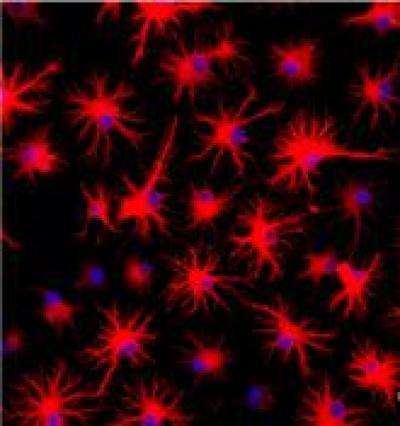Role of type-2 astrocytes on the repair of spinal cord injury

Increasing expression of bone morphogenetic proteins at the lesion site of the central nervous system possibly induces oligodendrocyte precursor cells to differentiate into type-2 astrocytes. While the restriction of oligodendrocyte differentiation could affect remyelination, it remains poorly understood how type-2 astrocytes regulate regeneration and functional recovery. Thus, examining the effects of type-2 astrocytes on neuronal growth is helpful in understanding the possible influential factors of oligodendrocyte precursor cells on axonal regeneration and remyelination, and may provide insights to develop a combined therapeutic strategy.
Prof. Xuegang Luo from Xiangya School of Medicine, Central South University in China and Qilin Cao from UT Medical School at Houston in USA led a relevant study. In this study, using a relatively simple culture condition in vitro, type-2 astrocytes, differentiated from oligodendrocyte precursor cells by induction with bone morphogenetic protein-4, were co-cultured with dorsal root ganglion neurons. They examined the effects of type-2 astrocytes differentiated from oligodendrocyte precursor cells on the survival and growth of dorsal root ganglion neurons. Results from this study showed that co-culture with type-2 astrocytes can increase neuronal survival rate and process length. However, compared with type-1 astrocytes and oligodendrocyte precursor cells, the promotion effects of type-2 astrocytes on the growth of dorsal root ganglion neurons were weaker.
These findings, published in the Neural Regeneration Research (Vol. 9, No. 2, 2014), highlight the importance of choosing the optimal cell types or the proper developmental stage of cells for treating neurological diseases. Manipulating the bone morphogenetic protein signaling in the injured area may be critical to improve the therapeutic effcacy of endogenous or grafted oligodendrocyte precursor cells.
More information:
Fan CL, Wang H, Chen D, Cheng XX, Xiong K, Luo XG, Cao QL. Effect of type-2 astrocytes on the viability of dorsal root ganglion neurons and length of neuronal processes. Neural Regen Res. 2014;9(2):119-128.
Provided by Neural Regeneration Research